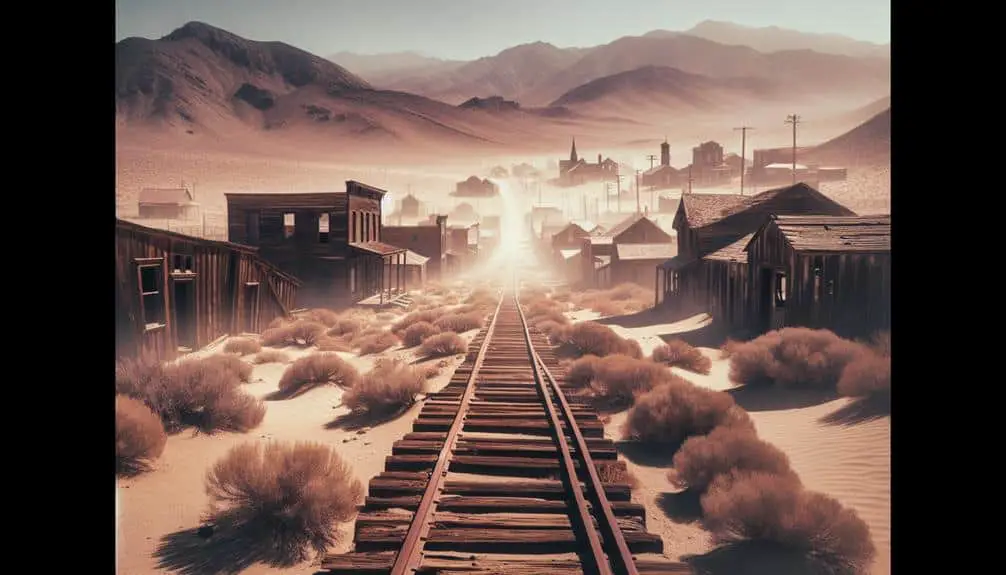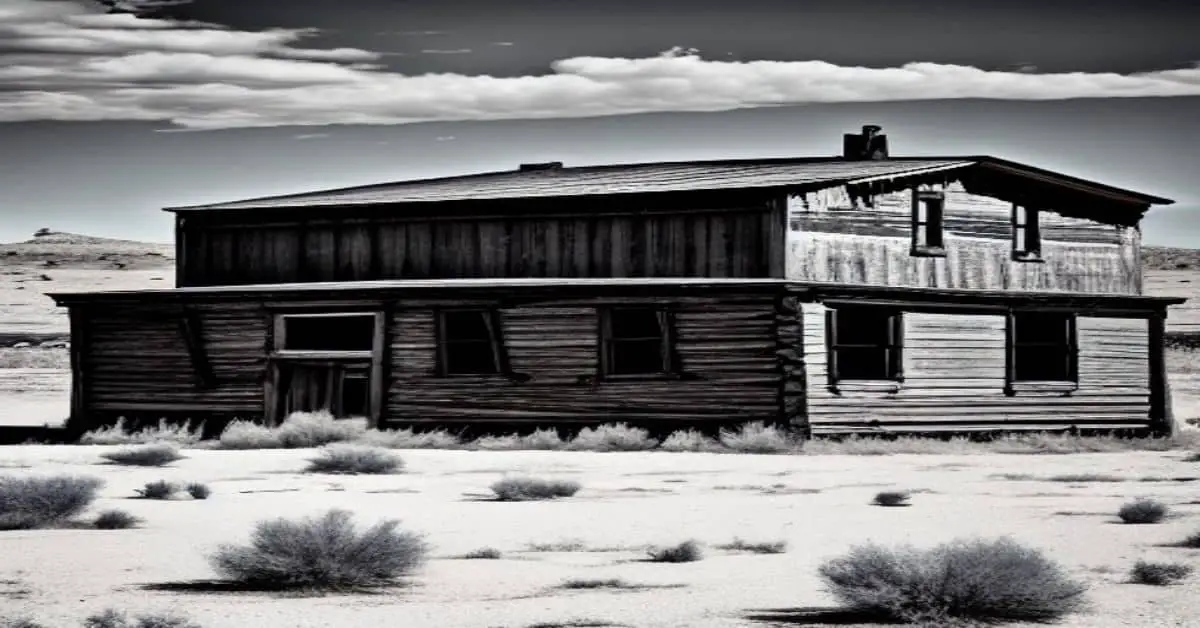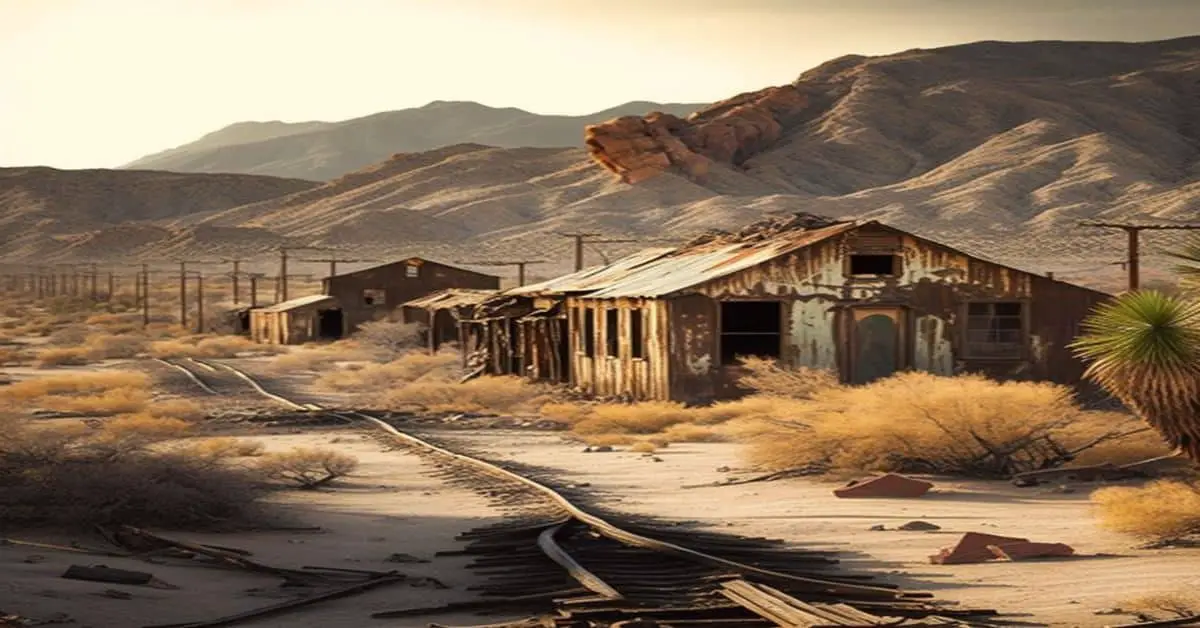Uncover the haunting charm of Arizona's forgotten railway towns, where time stands still amidst abandoned communities. Economic booms and busts shaped these once-thriving hubs of industry. Desertion came with economic woes, evolving transportation, and harsh desert conditions. Explore the architectural gems left behind and reveal the potential for preservation and urban exploration. These ghostly reminders of the past offer a glimpse into a bygone era of prosperity and progress. Embrace the allure of these abandoned settlements and dig deeper into the stories they silently hold.
Key Points
- Economic challenges and shifting transportation trends led to desertion.
- Decline of supporting industries impacted railway communities.
- Rise of automobiles and highways diverted traffic away from railway towns.
- Harsh desert environments and scarce resources contributed to economic woes.
- Abandoned rail stations hold historical significance and potential for tourism.
History of Arizonas Railway Towns
Explore the vibrant past of Arizona's railway towns, where the convergence of tracks and commerce shaped the very fabric of these communities. The history of Arizona's railway towns is a tale of rapid expansion and eventual economic decline. During the late 19th and early 20th centuries, railway expansion played an important role in connecting these towns to larger urban centers, facilitating the transportation of goods and people across the region. As a result, thriving local economies emerged, fueled by industries such as mining, agriculture, and manufacturing.
However, as the railway networks evolved and modernized, many of these towns faced economic challenges that led to their decline. Changes in transportation technologies and patterns, coupled with shifts in the economic landscape, contributed to the gradual abandonment of once-bustling railway communities. The echoes of prosperity still linger in the abandoned buildings and forgotten tracks, serving as a poignant reminder of a bygone era when these towns were at the heart of Arizona's bustling railway network.
Causes of Desertion in Railway Communities
As railway communities faced economic challenges and shifting transportation trends, the causes of their desertion became increasingly evident. The economic downturn, marked by the decline of industries supporting these towns, played a significant role in their abandonment. With the rise of automobiles and highways, railway lines lost their prominence, leading to decreased traffic and revenue. These communities, once thriving on the railway's success, struggled to adapt to the changing times.
Environmental factors also contributed to the desertion of railway towns. Some communities were located in harsh desert environments, facing water scarcity and extreme temperatures. The challenges posed by these conditions made it difficult for residents to sustain their livelihoods and forced them to seek more hospitable areas to settle. As resources became scarce, businesses faltered, further exacerbating the economic woes of these towns.
In the face of economic hardship and environmental constraints, railway communities found themselves deserted, leaving behind only remnants of their once vibrant existence.
Notable Abandoned Rail Stations
Prominent for their historical significance and architectural charm, several abandoned railway stations in Arizona stand as silent witnesses to a bygone era of bustling railway activity. These stations, with their intricate designs and unique features, hold immense potential for architectural preservation and urban exploration. The intricate details of these stations offer a glimpse into the past, attracting history enthusiasts and adventurers alike.
The economic impact of revitalizing these abandoned rail stations could be significant, as they've the potential to draw in tourism and create opportunities for local businesses. By showcasing the rich history and unique architecture of these stations, Arizona could tap into a new source of revenue through heritage tourism.
Exploring these abandoned rail stations not only provides a window into the past but also opens up opportunities for creative ventures and community engagement. With careful planning and investment, these stations could once again become vibrant hubs, breathing new life into the surrounding areas.
Revitalization Efforts in Ghost Towns
Have the revitalization efforts in Arizona's ghost towns successfully preserved their historical charm and attracted new opportunities for economic growth?
Many abandoned railway towns in Arizona have seen a resurgence in recent years through community collaboration and strategic economic development initiatives. Here's how these efforts have impacted the ghost towns:
- Preservation of Historical Sites: By working together, locals and preservation groups have managed to restore old buildings and landmarks, keeping the essence of the town's history alive.
- Tourism Boost: Revitalization projects have led to an increase in tourism, drawing visitors interested in exploring the rich past of these once-forgotten communities.
- Job Creation: The restoration of ghost towns has created new employment opportunities, ranging from tourism-related jobs to local artisan businesses.
- Small Business Growth: Entrepreneurs have been encouraged to set up shop in these revitalized areas, bringing in new services and products for both residents and tourists.
- Cultural Revival: Through events and activities, these towns have seen a resurgence in cultural vibrancy, attracting artists, musicians, and creatives to contribute to the town's unique atmosphere.
Haunting Stories of Deserted Settlements
Amidst the vast Arizona desert lie abandoned settlements with eerie tales that whisper through the winds of time. These ghostly encounters aren't for the faint of heart, as the spirits of the past are said to roam the empty streets and dilapidated buildings. One such tale revolves around the mysterious disappearances that plagued a once-thriving mining town. Locals whisper of spectral figures wandering the outskirts, their presence sending shivers down the spine of any who dare to venture near.
In another deserted settlement, a ghostly apparition is said to appear at dusk, a lost soul searching for something long forgotten. The community's tragic history is etched into the very fabric of the town, with each building bearing witness to the untold secrets buried within its walls. Visitors recount feeling an otherworldly presence, a feeling of being watched by unseen eyes.
As the sun sets over these abandoned towns, the stories of ghostly encounters and mysterious disappearances linger in the air, a haunting reminder of the lives once lived in these now-desolate places.
Frequently Asked Questions
Are There Any Specific Laws or Regulations in Place That Prevent the Development or Restoration of Abandoned Railway Towns in Arizona?
You'll find that Arizona has laws and regulations governing the development and restoration of abandoned railway towns. Historical preservation guidelines, property rights, and community engagement are important factors in determining the fate of these deserted communities.
How Have the Natural Landscapes Surrounding These Deserted Communities Changed Over Time Since Their Abandonment?
As you explore the deserted communities of Arizona, notice the ecological changes in the surrounding landscapes over time. Historical preservation efforts impact wildlife habitats positively, enhancing tourism potential. The area's evolution tells a compelling story.
Are There Any Documented Cases of Paranormal Activity or Ghost Sightings in These Abandoned Railway Towns?
Explore the mystery of paranormal activity in abandoned railway towns. Paranormal investigations and ghost tours offer a glimpse into the eerie past of these deserted communities. Engage with the supernatural while uncovering their haunted history.
What Were the Main Industries or Economic Activities That Sustained These Communities Before Their Decline?
Before their decline, the main industries in these communities were mining and agriculture, sustaining livelihoods for residents. While some tried to pivot to tourism or support revitalization efforts, many struggled to adapt, leading to abandonment.
How Do Local Residents or Nearby Communities View the Abandoned Railway Towns Today, and Is There Any Ongoing Dialogue About Their Preservation or Potential Future Use?
Today, locals and neighboring communities regard the abandoned railway towns with a mix of nostalgia and curiosity. Preservation efforts are ongoing, fueled by a desire to honor history and explore potential future uses through dialogue initiatives.



